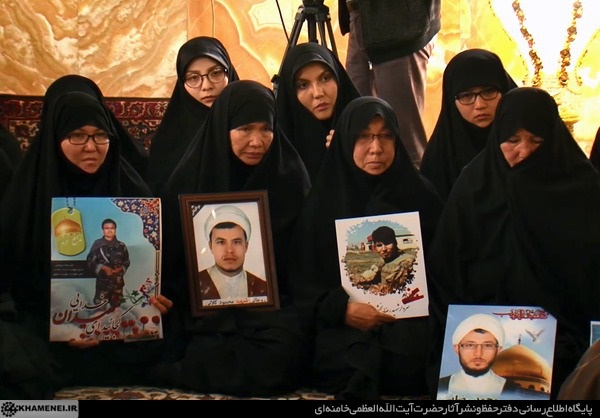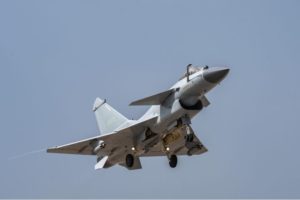
Iran Praises Revolutionary Guards’ Proxy Afghan Brigade
By Michael Rubin
Against the backdrop of the fight against the Islamic State that erupted in 2014, the Islamic Revolutionary Guard Corps’ (IRGC) Quds Force established a number of ethnic-based movements to fight in Syria.[i] The Quds Force deployed the Afghan Shia militia Liwa Fatemiyoun (Fatimid Banner) to Syria primarily to defend the Damascus shrine of Zaynab, the daughter of Imam Ali and the granddaughter of the Prophet Muhammad.

Mothers of Fatamayoun Militiamen Hold Photos of Sons Killed in Action, 2017.
“If it were not for their sacrifices, today the Islamic State would have advanced to Bangladesh.”
Against the backdrop of the fight against the Islamic State that erupted in 2014, the Islamic Revolutionary Guard Corps’ (IRGC) Quds Force established a number of ethnic-based movements to fight in Syria.[i] The Quds Force deployed the Afghan Shia militia Liwa Fatemiyoun (Fatimid Banner) to Syria primarily to defend the Damascus shrine of Zaynab, the daughter of Imam Ali and the granddaughter of the Prophet Muhammad.[ii] In the excerpted article from IRGC-affiliated Fars News Agency, General Mohammad Reza Fallahzadeh, Deputy Commander of the Quds Force, speaks about the legacy of the Liwa Fatemiyoun upon the death of one of its commanders. He describes the Fatemiyoun, an Afghan proxy of the IRGC, as a core component of the Iranian strategy to foil the Islamic State. While this may be an exaggeration in terms of actual fighting, the IRGC used the crisis to form the Fatemiyoun and other ethnic militias to further the IRGC’s aim to export revolution. That the Quds Force did not disband the Liwa Fatemiyoun after the defeat of the Islamic State inside Syria suggests that the IRGC seeks to preserve the group to utilize beyond its initial purpose. Fallahzadeh’s discussion that absent the Afghan brigade, the Islamic State might have reached Bangladesh, suggests that Iran might be ready for a renewed push into South Asia. Shortly after the Iranian Revolution, the IRGC sponsored not only Lebanese Hezbollah but sought to create a corollary movement among Pakistani Shia. While infiltration of the Lebanese diaspora helped the Quds Force project power not only in the Middle East, but also Africa and Latin America, it traditionally fell short in South Asia. Forty years later, the Quds Force might see the Liwa Fatemiyoun as a viable substitute for its failed Pakistan efforts to extend its influence as far to the east as it does to the west.[iii]
Source:
“Sardar Falahzadeh: Agar Aysargariha-ye Fatamayun Nabud, Emruz Da’esh ta Bangladesh Pishruye Kardeh Bud (General Falahzadeh: If It Were Not for the Sacrifices of the Fatamayun, the Islamic State Would Have Advanced to Bangladesh),” Fars News Agency (a news agency closely affiliated with the Islamic Revolutionary Guard Corps), 13 February 2023. https://www.farsnews.ir/news/14011124000424
General Mohammad Reza Fallahzadeh, the deputy commander of the Islamic Revolutionary Guard Corps-Quds Force, met in Yazd with the family of the late Sayyid Qasem Hosseini, a warrior defending the shrine from the [Liwa] Fatemiyoun Division. In this meeting, General Fallahzadeh commemorated upon the memory of the martyrs defending the shrine and said, “the Islamic State was not a normal organization, but a vicious pedigree that was both determined and motivated by its false belief, and, in a single sentence, it can be said that the Islamic State was the army of false belief.
The deputy commander of the Quds Force added, “Usually mercenary armies try to avoid suffering casualties, but the Islamic State, with their firm but vicious conviction, martyred our warriors with suicide operations and perished in the process. In Syria, all blasphemy was against all Islam, and it was the alliance between Muslims in Iraq, Syria, Afghanistan, Lebanon and Iran that stopped the Islamic State because [our] correct belief was greater and stronger.”
… He described the Islamic State as a product of the American Zionist plan and continued, “The defenders of the shrine and Fatemiyoun warriors, led by the Supreme Leader and the commander of the hearts of Haj Qassem Aziz [Qassem Soleimani], defeated this plan and secured a victory for the Islamic Front.”Referring to Fatemiyoun’s role in defending the Shrine of [Al-Sayyida] Zaynab [in Damascus], the deputy commander of the Quds Force said, “These beloved ones played an essential role in defending Islam, Shi’ism and humanity and, if it were not for their sacrifices, today the Islamic State would have advanced to Bangladesh.”
Notes:
[i] For more background on Iran’s Afghan and Pakistani militias, see: Michael Rubin, “Cleric Speaks on Iran’s Foreign Militias,” OE Watch, February 2019. https://community.apan.org/wg/tradoc-g2/fmso/m/oe-watch-past-issues/266059/download
[ii] Liwa Fatemiyoun was formed in 2014, although it is possible that former Afghan National Army soldiers are now serving in the ranks of Liwa Fatemiyoun, as thousands have fled Afghanistan and now reside in Iran.
[iii] For an earlier discussion of Iran’s concept of strategic boundaries extending to its west, see: Michael Rubin, “Iranian Influence Extends to the Mediterranean,” OE Watch, September 2018. https://community.apan.org/wg/tradoc-g2/fmso/m/oe-watch-past-issues/242569/download
Image Information:
Image: Mothers of Fatamayoun Militiamen Hold Photos of Sons Killed in Action, 2017
Source: https://images.khabaronline.ir//images/2016/5/16-5-14-135413950108_0633065.jpg
Attribution: Khabar Online
Distribution A: Approved for public release
Categories:
Tags:
Related Products
Chinese Military Exercises Highlight Improvements in Joint Operations
North Korean Media Stays Quiet Despite Global Concerns






